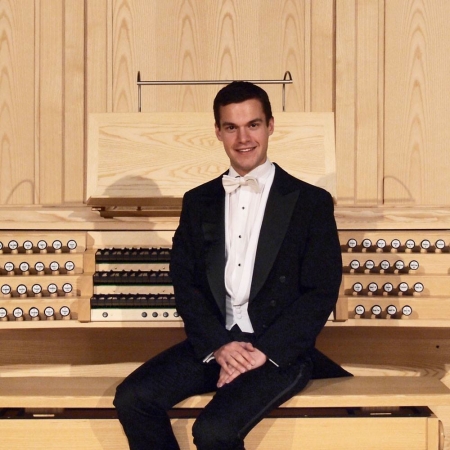 United Kingdom Bach, Clavier-Übung III (excerpts): Nathan Laube (organ), Royal Festival Hall, London, 17.1.2019. (CC)
United Kingdom Bach, Clavier-Übung III (excerpts): Nathan Laube (organ), Royal Festival Hall, London, 17.1.2019. (CC)

Bach – Clavier-Übung III:
Praeludium pro Organo pleno, BWV552/1
Kyrie, Gott Vater in Ewigkeit, BWV672
Christe, aller Welt Trost, BWV673
Kyrie Gott heiliger Geist, BWV671
Allein Gott in der Höh sei Ehr, BWV675
Fughetta supra ‘Allein Gott in der Höh sei Ehr,’ BWV677
Dies sind die heiliger Zehen Gebot, BWV678
Fughetta supra ‘Dies sind die heiliger Zehen Gebot,’ BWV679
Wir glauben all an einen Gott, BWV680
Vater unser im Himmelreich, BWV682
Christ, unser Herr zum Jordan kam, BWV684
Aus tiefer Not schrei ich zu dir, BWV686
Jesus Christus, unser Heiland, der von uns den Zorn Gottes wandt, BWV688
Fuga a 5 con pedale pro Organo pleno, BWV662/2
The American organist Nathan Laube is an ardent, eloquent spokesperson for Bach’s music: something clear not only from his music-making but also from the pre-concert talk also. Associate Professor of Organ at America’s famous Eastman School, this was Laube’s first time at the Royal Festival Hall. The organ, with its 7866 pipes, is an imposing beast of an instrument, heard here in all its glory.
Bach’s Clavier-Übung III begins with the Praeludium from the so-called ‘St Anne’ Prelude and Fugue; the Fugue closes the evening. The delightful Four Duets, BWV 802-805, were omitted here, without any reason given. After the ‘St Anne’ Praeludium, Laube played BWV672, 673 and 671 (in that order) to create a Kyrie-Christe-Kyrie patterning: BWV 669 and 670 (‘Kyrie, Gott Vater’ and ‘Christe, alle Went Trost’) were both absent. The ‘Gloria’ (the work is also known as ‘Deutsch Messe’ and indeed follows the Mass trajectory) began at ‘Allein Gott in der Höh sei Ehr,’ BWV675, the Credo from ‘Wir glauben all an einen Gott’. A last-minute shift of interval had us heading out prior to the Credo – it was originally advertised after ‘Wir glauben’ – although I do wonder whether an interval is necessary (Nathan Laube would presumably disagree in terms of sheer concentration and stamina).
Bach’s work is a veritable catalogue of styles both old and new at the time, with motet-like, Palestrina-style writing in the Stile antico against Bach at his most Heaven-storming and, as Laube put it in the pre-concert event, at his ‘most thorniest’. Add to this gallant gestures and the piece becomes a veritable compendium. All of this Laube played with consummate technique and a fine ear for sonority. Reed stops for BWV672 and 673 enabled the cantus firmus to penetrate perfectly. In the ‘Lord’s Prayer’ (‘Vater under im Himmelreich’), Bach’s writing is at its most progressive and exploratory, a trio texture melding with a two-voice canon.
Laube’s explanation of Bach’s complexities of thought in the pre-concert event gave an idea of his enthusiasm for this music; he seems to have a questing intellectualism as well as an inherent feel for Bach’s expression that makes him perfect for a piece shot through with theological and numerical symbolism (interestingly the complete piece comprises 27 pieces, or 3 cubed).
Laube’s rhythmic strength was highly laudable, and most noticeable perhaps in the Fughetta supra ‘Dies sind die heiliger Zehen Gebot,’ BWV679, with its repetitions of a G natural that cleverly, through counterpoint, add up to ten (for the Ten Commandments). Here, Laube allowed the piece to unfold naturally, with zero sense of rushing. From the intriguingly angular, almost playful ‘Jesus Christus, unser Heiland der von uns den Zorn Gottes wandt’ to the all-enveloping pedal cantus firmus of ‘Aus tiefer Not’, this was a remarkable journey. The culminatory point was, of course, the ‘St Anne’ Fugue; Laube enabled the sheer majesty of Bach’s vision shine through.
Bach’s dramatic use of textural build-up was visceral, his daring contrasts away from huge sound aggregations making full effect. A remarkable evening.
Colin Clarke
